The internet is filled with games - and I'm not talking about the ones streamed on Twitch. The best internet games are the ones that are hidden in plain sight.
Framing the internet as a collection of games, or even as a giant infinite game in itself, isn't a new idea. Numerous people have discussed the implications of internet games and how winning strategies can produce outstanding real-life rewards. Often overlooked in the scope of internet game theory, however, is the fact that we’re structurally constrained to one suboptimal game mode: single-player.
At its core, the internet is a giant meme-propagation machine. Memes are the atomic units of culture - compact units of information that have a collective and dynamic identity. It’s easy to identify a good meme, because the strongest memes share two universal characteristics:
- They bundle complex ideas, thoughts, or behaviors into a compact and digestable form factor
- They’re easy to share
On the internet, we most commonly identify memes manifesting themselves as digital media. Photo memes attain massive virality on Twitter and Instagram. Videos and audio snippets spread with blazing velocity on TikTok. Copypastas roam unhinged on Reddit.
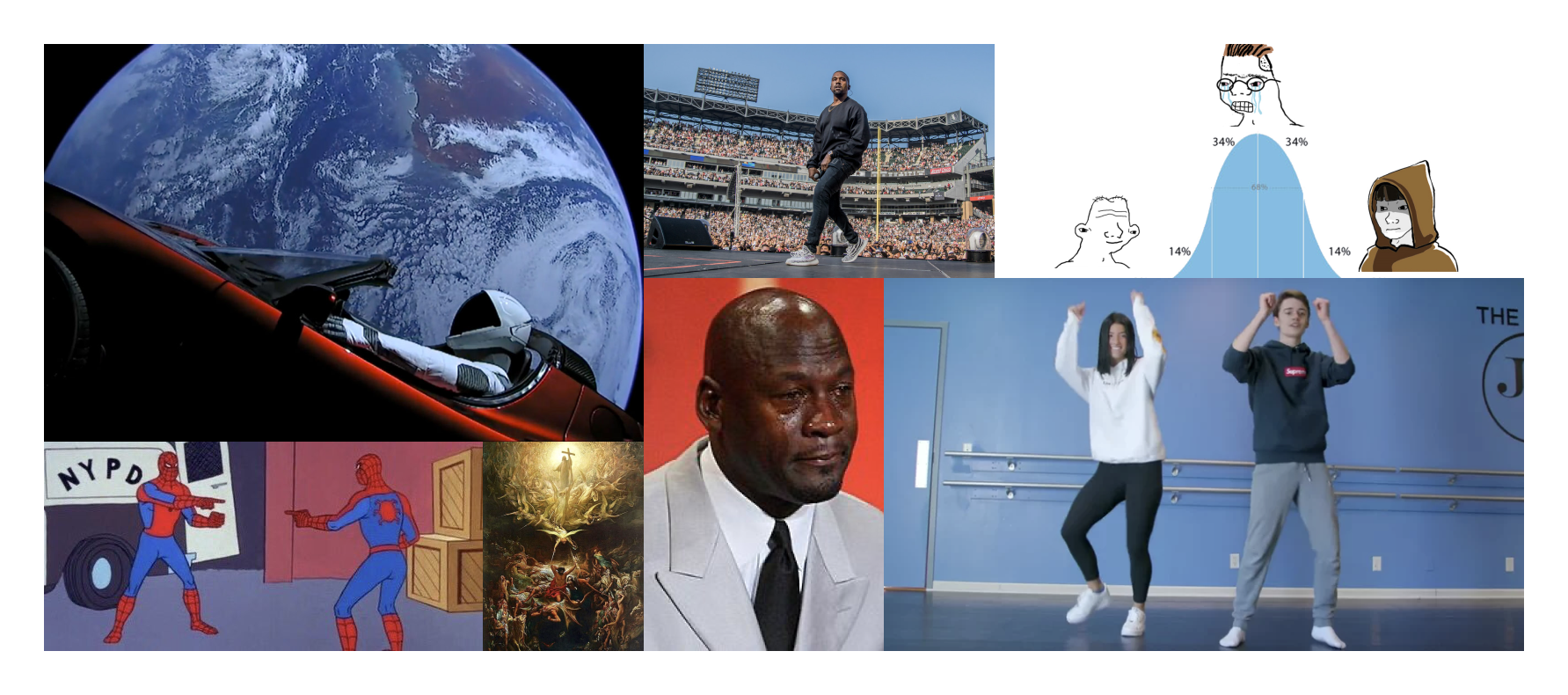
Memes are the OG form of decentralization, and share many characteristics with cryptocurrencies. First, memes are permissionless. Anyone can create a meme without the approval of an authoritative gatekeeper. Critically, memes are composable. In order to spread from person to person, memes need to be able to attach themselves to some component of that person’s life experience. Thus, the best memes are those that can be remixed infinitely yet trace back to the same fundamental idea. Relatedly, memes are forkable. As the evolve, memes can be split into submemes, each with their own unique point of differentiation.
These points can be combined into a single core characteristic: memes are multiplayer. The strongest memes take on a collective identity that doesn’t rely on a single centralized source to have legitimacy. As memes propagate through the nodes in the collective network of humans in a culture, they exemplify the notion of legitimacy by participation; a meme gains legitimacy as it is increasingly accepted by each node. Ultimately, memes represent the utopian state of decentralized media - media that is collectively created, curated, remixed, and distributed by a network of participants.
As you can see, the internet is built for memes. Except it’s not.
There’s one glaring question about memes that hasn’t been addressed yet: how do we capture the value of a meme?
Today, centralized platforms monopolize the pricing and value capture of memes. To understand why, first consider how to measure the value of a meme. A good proxy for measuring a meme’s value is measuring the amount of attention a meme generates. This doesn’t necessarily mean that the more people who moderately see/internalize a meme = the more value the meme accrues. A meme can accrue immense value if a few people give that meme an extreme amount of attention (ex: indie music fans, tribal cults). Currently, the dominant way to capture the value around memes is through aggregating their attention and funneling that attention through extractive, centralized advertising infrastructure. The value of memes is siphoned exclusively by monopolistic platforms who monetize the attention aggregated in their walled gardens. Meanwhile, the creators, curators, remixers, and distributors of meme never realize any of that value. Digital memes are a multiplayer game that’s being played on single-player infrastructure.
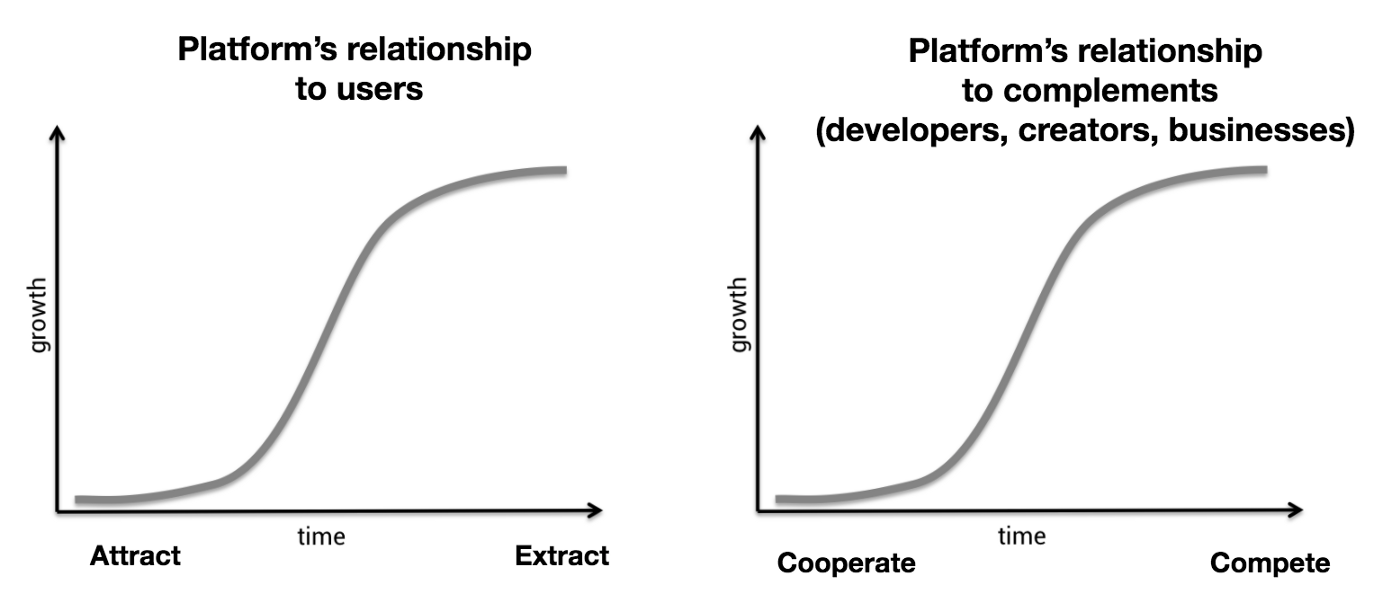
The result is extreme incentive misalignment and inefficiency to capitalize on the inherent cooperative force of memes. Centralized platforms are motivated to aggressively grow a single "global water cooler" network in order to maximize the amount of attention generated. However, individuals are incentivized to compete with each other to capture a fraction of the network's attention and bankroll that attention into downstream benefits. The result is a zero-sum game in which the platform is the only guaranteed beneficiary. Instead of fostering environments where individuals can share in the cooperative value generated by a meme, the platform forces fragmentation and diminishes the ability for memes to realize their full potential.
Thus, it is necessary to build new multiplayer infrastructure for the internet which enables individuals to coordinate and experience the value of collective media.
This is the Verse Protocol.
Verse is a cryptomedia exchange protocol which enables digital media to have an embedded economy. In contrast to the centralized ideal of building a gated economy around media, Verse is designed around a simple concept: media is the economy.
First off, what is cryptomedia? As Jacob Horne explains, cryptomedia can be thought of as hypermedia with built-in property rights. ERC-721 NFTs are the canonical manifestation of cryptomedia. Each NFT consists of a digital content component and an ownership component by which a single owner holds provenance over the token.
NFTs conforming to this standard provide an extremely valuable system for facilitating ownership and exchange around singular digital objects. However, they aren’t designed for effectively capturing value around collective creation, curation, and distribution.
Verse introduces a new standard for multiplayer cryptomedia specifically designed for building microeconomies around memes. Through Verse, anyone can deploy a cryptomedia contract. Each contract consists of:
- A primary media URI
- An ERC-20 automated market governed by a continuous bonding curve
- A staking system which enables token-holders to create and curate remixes of the primary media
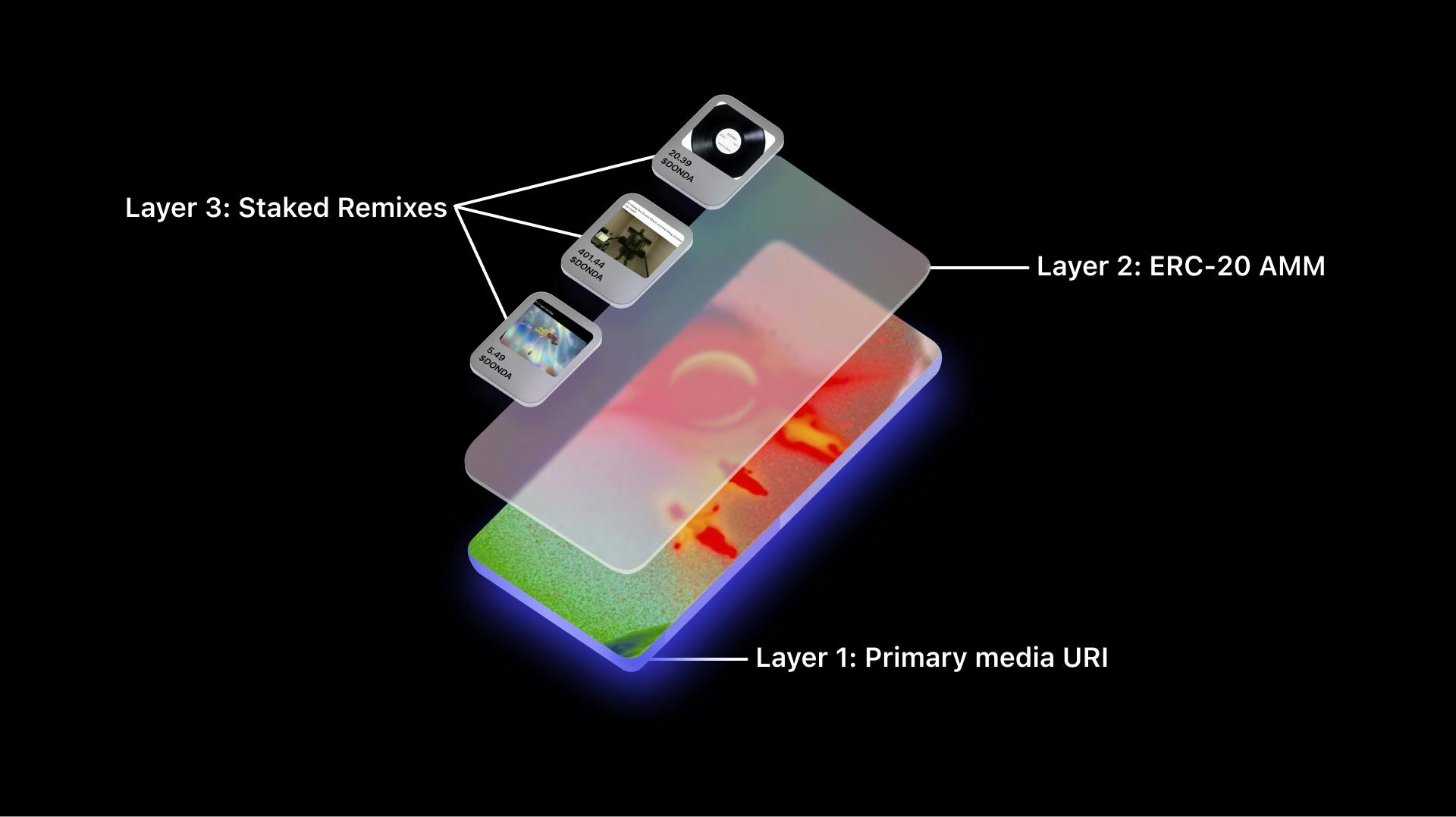
Let’s break it down. When someone deploys a new cryptomedia contract through the Verse protocol, that person specifies a mediaURI which will be the “primary media” of the contract. Think of it as the “original meme” - the foundational template like a blank crying Jordan face or 4-panel Anakin and Padme.
The deployed cryptomedia contract represents a continuous ERC-20 token whose price is programmatically determined as a function of the token’s supply through the use of a power-based bonding curve. This means that when people want to buy the token, the contract mints new tokens and increases the price of each. People can then sell their tokens back to the contract, which burns the tokens and subsequently decreases the price. This behavior is extremely important because it manifests the theoretical concept of a meme accruing more value as its attention increases; as more people purchase the token of a meme, the token price rises, and as the meme dies, the price falls. Practically, people can now speculate on and exchange the attention and legitimacy of a meme, respectively.
Embedding a native, on-chain market within a meme removes the need for centralized gatekeepers to capture the meme’s value. Furthermore, the use of ERC-20 tokens enables each meme to not only be an asset, but a full-fledged microeconomy. Consider one of the most important qualities of a meme: the ability to be remixed. Remixing is the lifeblood of any strong meme and ensures that a meme survives to propagate between non-immediate nodes in a network. Thus, mechanisms designed to facilitate remixing represent core components of the Verse Protocol. To understand how the remixing mechanism works, consider the Uniswap Protocol. Trading on Uniswap is made possible through the activity of liquidity providers (LPs) who deposit tokens into a pool to facilitate exchanges. In return for providing liquidity, LPs are minted LP tokens. These LP tokens represent a provider’s pro-rata share of the liquidity reserves, and can be burned to redeem an LP’s underlying liquidity as well as transaction fees generated for each trade. In a way, a Uniswap pool’s LPs build the collective identity of the pool, and are rewarded for their contributions. Verse builds on the idea of the LP mechanism to incentivize remixing of cryptomedia.
For any cryptomedia contract, token holders can call a remix function. When calling this function, the holder (remixer) specifies a media URI. The contract then generates a new mapping with a remixId to the specified mediaURI. Other token holders can then call the contract’s stake function, passing in a remixId as an argument. By doing this, the token holder has effectively curated that remix and signaled its value to the original meme. In return for curating remixes, curators are rewarded with auxiliary curator (C) tokens. Whenever a new buyer purchases tokens for the cryptomedia contract, a transaction fee is generated which goes into a curator pool. Curators (stakers) can then burn their C tokens to redeem their pro-rata share of the transaction fees, which are split with the remix creator. In this way, token holders are natively incentivized to use their tokens to generate and curate quality remixes which increase the attention and value of the meme. In doing so, they contribute to a fully legitimized cryptomedia meme economy. What might this look like in the real world?
If you’re a Kanye West fan (if you’re not, fix that), you’re intimately familiar with the story of DONDA. As an album that had been in the works for years, DONDA had seen numerous release dates, a bevy of listening parties, and countless iterations before the project ultimately released in August 2021. For Kanye fans, DONDA represented more than an album. DONDA was a meme. As the album was repeatedly pushed back and worked on, Kanye fans took to Twitter, Reddit, and other platforms to share remixed jokes about Kanye’s outfits, speculate on new features being added, and talk about different Yeezy products that were circulating as a backdrop of the project. DONDA was a years-long collective experience that united Kanye fans who came together to build the narrative and feeling about the project, which ultimately became a story of outlandish detail, dedication, redemption, and twitchy genius. My favorite part of the DONDA meme ecosystem was a YouTube channel I found called The Donda Project, in which a talented fan produced homemade variations of DONDA tracks spliced together from all the various releases and leaks that had come out over the years.
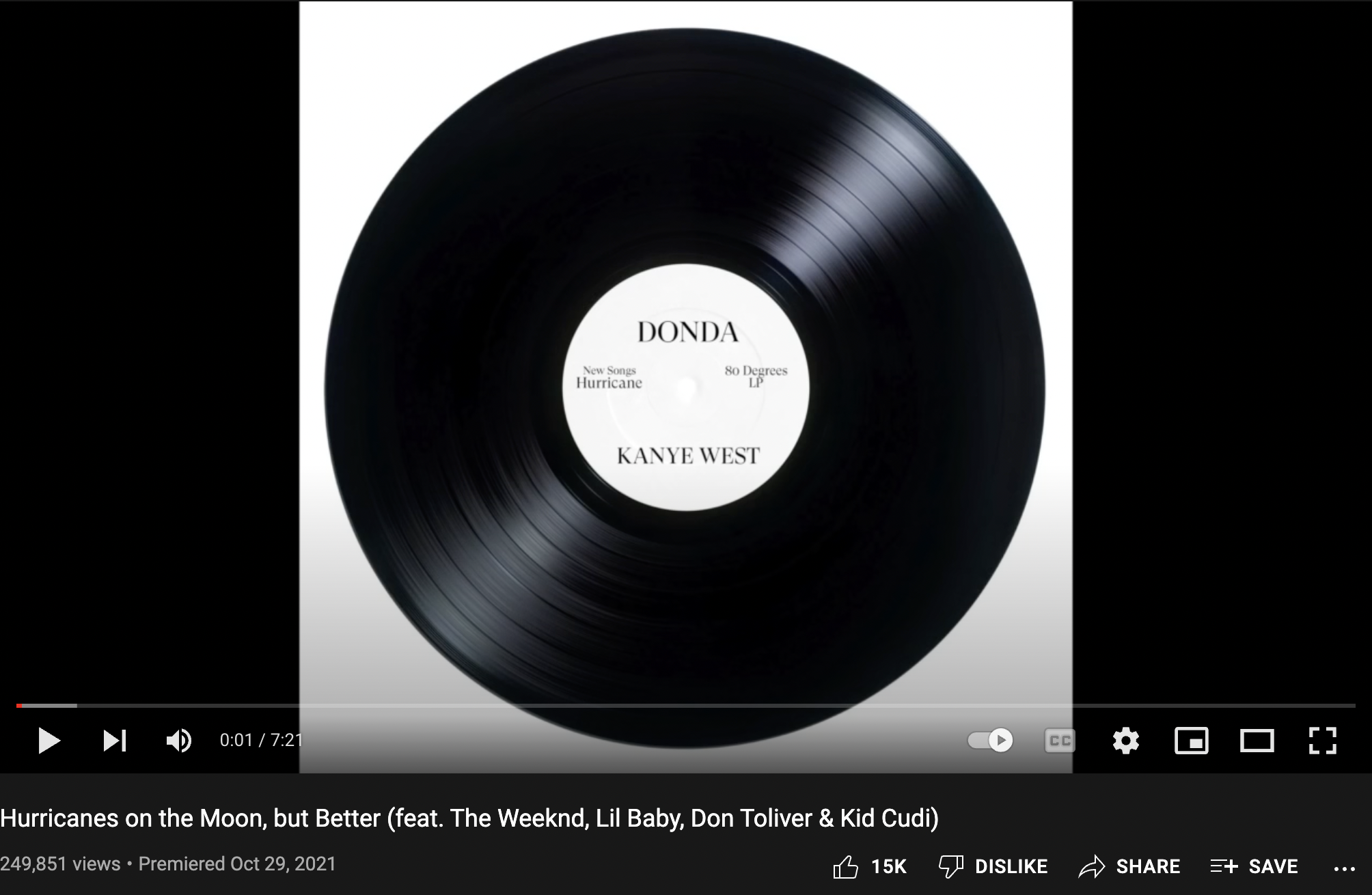
For all the attention and value that DONDA generated for millions of fans, who profited? Centralized platforms profited, who aggregated the attention of the DONDA meme while the creators, curators, and distributors who made DONDA into a collective experience were compensated with likes. Now, imagine a world where the attention and memes around DONDA could be exchanged, and the participants of the meme network could realize the true financial value of their contributions in crafting the DONDA story? Let’s see.
Imagine Adam buys 100 tokens for the $DONDA cryptomedia contract, which costs 4 ETH. 4 ETH gets deposited into the bonding curve’s ETH pool. 100 tokens are minted by the bonding curve and transferred to Adam. Additional tokens (representing 5% of Adam’s purchase amount) are minted by the bonding curve and deposited in an internal Curator pool. In this case, 5 additional tokens are minted and deposited in this pool.
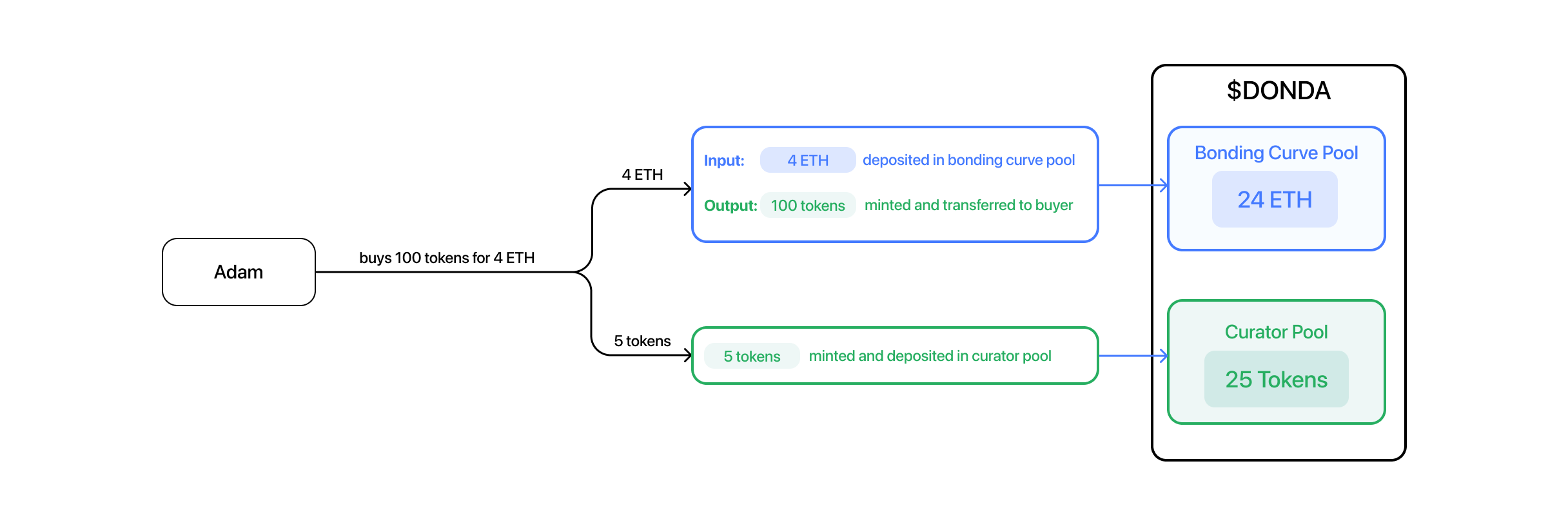
Adam decides to stake 10 of his tokens to The Donda Project, which is a piece of content created by Blake to add to the DONDA content ecosystem as a meme remix. This remix has a remixId of 003. The Curator pool now contains the original 25 + Adam’s 10 = 35 total tokens. In return for staking 10 of his tokens, Adam is minted 10 Curator tokens, which represent his pro-rata share of the Curator pool.

Now, assume another buyer, Chris, purchases 200 tokens for 50 ETH. The inflationary minting fee from this purchase is 10 tokens. So 10 more tokens are minted and deposited in the Curator pool. The total number of tokens in the Curator pool is now 45.

Now, Adam decides to burn his 10 Curator tokens that he got from staking in remix 003. Since the total number of Curator tokens is 30, his pro-rata share of the Curator pool is (10/30) * 45 = 15 Curator pool tokens. Of these 15 Curator pool tokens, 10 of these tokens represent the amount that Adam original staked in remix 003 (Blake’s creation). Adam is transferred these 10 tokens. Of the 5 additional tokens that represent the “profit” received from curating, 50% (2.5 tokens) are transferred to Adam, while 50% (2.5 tokens) are transferred to Blake.
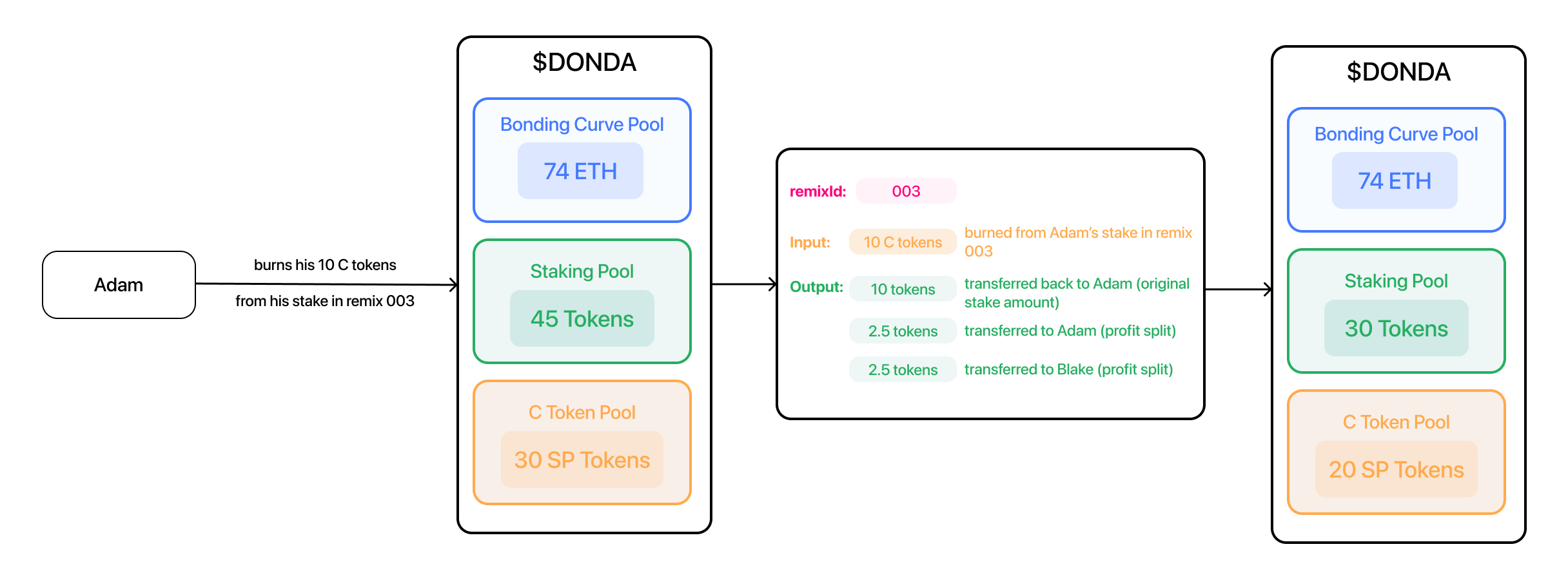
Crypto mechanisms, particularly tokenization and automated market makers, have enabled coordination games that could never practically exist before. Legitimacy is a natural byproduct of a coordination game. In any coordination game, if a mechanism incentivizes participants to cooperate and act together to achieve a goal instead of acting alone, that mechanism has legitimacy. Verse is designed for individuals to coordinate around creating autonomous digital economies that generate value without the need for an intermediary. If the token holders for a piece of cryptomedia can coordinate to build a popular content ecosystem around a meme, the value of their tokens should increase as more people demand the token, drive attention to the meme, and want their own remixes to be included in the meme’s economy. In contrast, it's expensive for any one individual to create or curate irrelevant remixes or drive negative attention to the meme, because doing so decreases the token's value.
So long term, what is the vision for Verse?
After Virgil Abloh’s tragic passing late last year, Fred Ehrsam shared a collaborative plan Virgil was working on in the crypto space. The plan outlined the creation of “SKYSCRAPER”, a digital and physical space where creators and curators could collaborate on building a unique microeconomy powered by a common token. This space would represent a collective where “curation and governance [were] decentralized” and the space’s marketplace, gallery, and studio were all powered by a focal token. A forward thinker in every sense, Virgil’s SKYSCRAPER vision represents a blueprint for how digital, internet-native economies should operate.
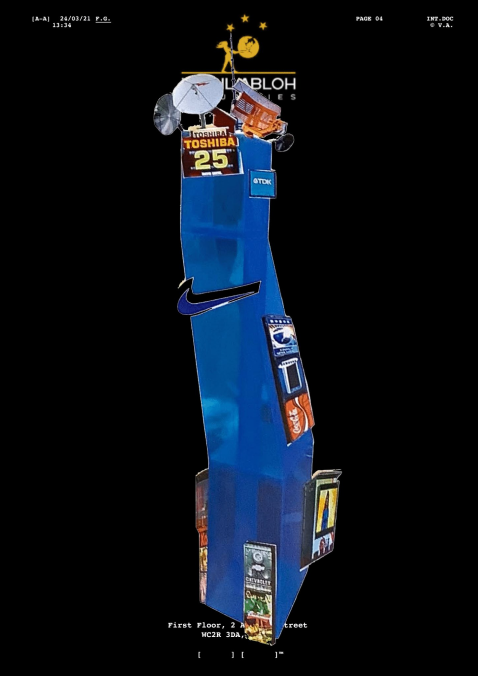
As a protocol, Verse is designed to be the internet exchange - a hyperstructure for collaboration which enables every piece of digital media on the internet to be part of an autonomous economy of creators, curators, distributors, merchants, and more. There are enormous positive externalities that result from every piece of universal media having an embedded mechanism for value capture. Namely, a free market for frontend interfaces and discovery algorithms will emerge, where people will have the ability to choose between different clients that produce the best information for them. Fundamentally, Verse will create an internet which incentivizes and supercharges collaboration and collective information. The internet is in need of new infrastructure, and Verse is creating multiplayer mode.